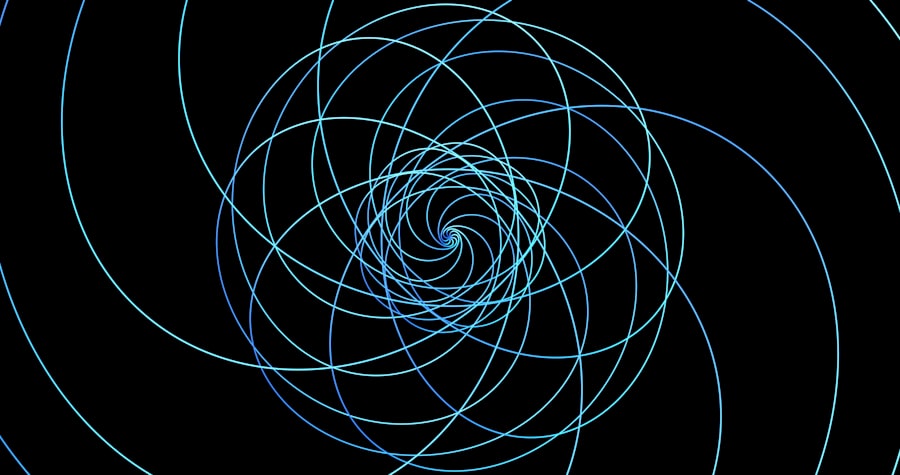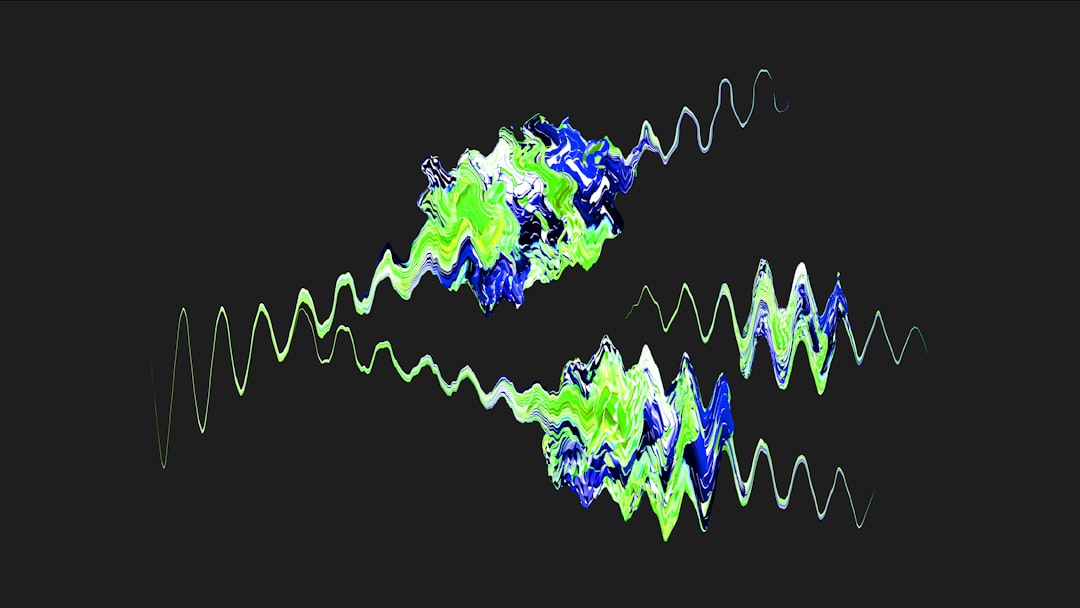Magnetic field reversal is a fascinating phenomenon that has intrigued scientists and researchers for decades. This process, where the Earth’s magnetic poles switch places, occurs over geological timescales and has significant implications for life on Earth. The concept of magnetic field reversal is not merely a scientific curiosity; it is a critical aspect of understanding the planet’s geophysical processes and their potential impacts on both the environment and technology.
As researchers delve deeper into the mechanisms behind these reversals, they uncover a complex interplay of forces that shape the Earth’s magnetic field and, by extension, its atmosphere and surface conditions. The study of magnetic field reversals offers insights into the dynamic nature of the Earth’s interior. It raises questions about the stability of the magnetic field and its role in protecting the planet from solar radiation.
Understanding this phenomenon is essential for predicting future reversals and assessing their potential consequences. As scientists continue to explore this area, they are not only piecing together the history of our planet but also preparing for the challenges that may arise from future magnetic field changes.
Key Takeaways
- Magnetic field reversal is a phenomenon where the Earth’s magnetic field flips its polarity, causing the north and south magnetic poles to switch places.
- The Earth’s magnetic field is generated by the movement of molten iron in the outer core, and it plays a crucial role in protecting the planet from solar winds and cosmic radiation.
- Causes of magnetic field reversal are still not fully understood, but they may be linked to changes in the Earth’s core dynamics.
- Evidence of magnetic field reversals can be found in the geological record, such as in the alignment of magnetic minerals in rocks and ocean floor sediments.
- Magnetic field reversal can have significant impacts on Earth, including potential effects on climate, technology, and even the behavior of migratory animals.
The Earth’s Magnetic Field
The Earth’s magnetic field is a vital component of the planet’s environment, generated by the movement of molten iron and nickel in its outer core. This geodynamo effect creates a magnetic field that extends far beyond the surface, forming a protective shield against harmful solar and cosmic radiation. The magnetic field is not uniform; it varies in strength and direction across different regions of the Earth.
This variability is crucial for navigation, as compasses rely on the magnetic field to point towards the magnetic north. In addition to its navigational importance, the Earth’s magnetic field plays a significant role in maintaining life on the planet. It helps to deflect charged particles from the sun, which could otherwise strip away the atmosphere and expose the surface to harmful radiation.
The magnetic field also influences weather patterns and climate systems, making it an essential factor in understanding Earth’s environmental dynamics. As scientists study the intricacies of this magnetic shield, they gain valuable insights into its historical fluctuations and potential future changes.
Causes of Magnetic Field Reversal

The causes of magnetic field reversal are complex and not yet fully understood. However, researchers believe that these reversals are linked to changes in the flow of molten iron within the Earth’s outer core. As convection currents shift due to variations in temperature and pressure, they can disrupt the existing magnetic field, leading to a gradual weakening before a complete reversal occurs.
This process can take thousands to millions of years, indicating that magnetic field reversals are not sudden events but rather prolonged transitions. Another contributing factor to magnetic field reversal may be related to external influences such as solar activity or tectonic movements. Some scientists propose that interactions between the Earth’s magnetic field and solar winds could play a role in triggering these reversals.
Additionally, geological events such as volcanic eruptions or earthquakes may also impact the flow of materials within the core, further complicating the dynamics of magnetic field behavior. Understanding these causes is crucial for predicting when future reversals might occur and how they could affect life on Earth.
Evidence of Magnetic Field Reversals
| Study | Year | Findings |
|---|---|---|
| Earth’s Magnetic Field Reversals | 2018 | Identified evidence of multiple magnetic field reversals in Earth’s history |
| Magnetic Field Reversal in Oceanic Crust | 2020 | Discovered magnetic field reversal patterns in oceanic crust samples |
| Impact of Magnetic Field Reversals on Climate | 2019 | Studied the correlation between magnetic field reversals and climate changes |
Evidence of past magnetic field reversals can be found in various geological records, including ocean floor sediments and volcanic rocks. Scientists have studied the orientation of magnetic minerals within these materials to reconstruct a timeline of reversals over millions of years. The patterns observed indicate that reversals are not random but occur at irregular intervals, with some periods experiencing multiple reversals while others remain stable for extended durations.
One of the most significant pieces of evidence comes from paleomagnetism, which examines the magnetic properties of rocks formed during different geological periods. By analyzing these properties, researchers have identified distinct patterns that correlate with known geological events, providing a clearer picture of how often reversals have occurred throughout Earth’s history. This data not only enhances understanding of the Earth’s magnetic field but also offers insights into broader geological processes and their implications for life on our planet.
Impact of Magnetic Field Reversal on Earth
The impact of magnetic field reversal on Earth can be profound, affecting both natural systems and human activities. One immediate concern is the potential weakening of the magnetic shield during a reversal, which could expose the planet to increased levels of solar radiation. This exposure may have detrimental effects on satellite operations, communication systems, and even power grids, leading to disruptions in technology that society relies upon daily.
Moreover, changes in the magnetic field can influence animal behavior, particularly for species that rely on magnetoreception for navigation. Birds, sea turtles, and other migratory animals may find their migratory routes disrupted during periods of magnetic instability. Additionally, shifts in climate patterns could occur as a result of altered atmospheric conditions linked to changes in solar radiation levels.
Understanding these impacts is crucial for developing strategies to mitigate potential risks associated with future magnetic field reversals.
The Process of Magnetic Field Reversal

The process of magnetic field reversal is gradual and complex, typically unfolding over thousands to millions of years. Initially, as convection currents within the outer core change direction or intensity, the existing magnetic field begins to weaken. This weakening phase can last for several thousand years, during which time the magnetic poles may wander significantly from their original positions.
Eventually, as the flow patterns stabilize in a new configuration, a complete reversal occurs. During this transition period, multiple fluctuations in magnetic intensity can be observed, leading to a chaotic state where the magnetic field may exhibit multiple north and south poles simultaneously. This phenomenon is known as geomagnetic excursions and can last for several centuries before settling into a new stable configuration.
Magnetic Field Reversal in Other Planets
Magnetic field reversals are not unique to Earth; other planets in our solar system exhibit similar phenomena. For instance, Mars once had a strong magnetic field that has since weakened significantly, leading scientists to speculate about its past habitability. The absence of a protective magnetic shield has left Mars vulnerable to solar winds, resulting in atmospheric loss over billions of years.
Additionally, studies of Jupiter’s moon Ganymede reveal that it possesses its own magnetic field, which may also experience reversals. Understanding how these processes occur on other celestial bodies can provide valuable insights into planetary formation and evolution. By comparing Earth’s magnetic history with that of other planets, researchers can develop more comprehensive models that explain not only our own planet’s behavior but also that of others in our solar system.
Predicting Magnetic Field Reversals
Predicting when future magnetic field reversals will occur remains a significant challenge for scientists. While researchers have established patterns based on historical data, the irregularity and complexity of these events make precise predictions difficult. Current models rely on understanding convection currents within the outer core and monitoring changes in geomagnetic intensity through satellite observations.
Advancements in technology have improved data collection methods, allowing scientists to gather more accurate information about the Earth’s magnetic field dynamics. However, despite these advancements, predicting specific timing remains elusive due to the chaotic nature of geophysical processes involved in reversals. Continued research is essential for refining predictive models and enhancing preparedness for potential impacts associated with future events.
Magnetic Field Reversal and Climate Change
The relationship between magnetic field reversal and climate change is an area of ongoing research that raises intriguing questions about Earth’s environmental history. Some studies suggest that periods of geomagnetic instability may correlate with significant climate shifts throughout geological history. For instance, changes in solar radiation exposure during reversals could influence atmospheric conditions and contribute to alterations in global climate patterns.
While direct causation remains difficult to establish, understanding this relationship is crucial for comprehending how Earth’s systems interact over time. As climate change continues to be a pressing global issue, exploring potential links between geomagnetic activity and climate variability may provide valuable insights into long-term environmental trends.
Magnetic Field Reversal and Technology
The implications of magnetic field reversal extend beyond natural systems; they also pose challenges for modern technology. Satellites and communication systems are particularly vulnerable during periods of geomagnetic instability due to increased exposure to solar radiation. This exposure can lead to disruptions in satellite operations, affecting everything from GPS navigation to weather forecasting.
Moreover, power grids may experience surges or failures during significant geomagnetic events, leading to widespread outages or damage to infrastructure.
Conclusion and Future Research
In conclusion, magnetic field reversal is a complex phenomenon with far-reaching implications for both Earth’s natural systems and human technology. As scientists continue to unravel the intricacies behind this process, they gain valuable insights into not only our planet’s history but also its future trajectory. The interplay between geological forces and environmental conditions underscores the need for ongoing research in this area.
Future studies will likely focus on improving predictive models for magnetic field behavior while exploring potential links between geomagnetic activity and climate change. By enhancing understanding of these processes, researchers can better prepare for potential impacts associated with future reversals and contribute to broader discussions about planetary health and sustainability. As our knowledge expands, so too does our ability to navigate the challenges posed by this fascinating aspect of Earth’s geophysical dynamics.
In recent years, the study of Earth’s magnetic field reversals has garnered significant attention from the scientific community. These reversals, where the magnetic north and south poles switch places, have occurred numerous times throughout Earth’s history. Understanding the mechanisms and implications of these reversals is crucial for comprehending the planet’s geodynamic processes. A related article that delves into the intricacies of magnetic field reversal science can be found on XFileFindings. This article provides insights into the latest research and theories surrounding this fascinating phenomenon. For more detailed information, you can read the article by visiting this link.
WATCH THIS! 🙆 CIA Files: They Know When The Poles Will Flip (And Why They’re Hiding It)
FAQs
What is a magnetic field reversal?
A magnetic field reversal is a phenomenon where the Earth’s magnetic field flips its polarity, causing the magnetic north and south poles to switch places.
How often do magnetic field reversals occur?
Magnetic field reversals are relatively rare, occurring on average every 200,000 to 300,000 years. However, the timing and frequency of these reversals are not entirely predictable.
What causes a magnetic field reversal?
The exact cause of magnetic field reversals is not fully understood, but it is believed to be related to changes in the Earth’s outer core, where the magnetic field is generated by the movement of molten iron and nickel.
What are the potential effects of a magnetic field reversal?
During a magnetic field reversal, the Earth’s magnetic field weakens and becomes more chaotic, which could potentially have effects on navigation systems, animal migration patterns, and the shielding of the Earth from solar radiation.
How do scientists study magnetic field reversals?
Scientists study magnetic field reversals by analyzing the magnetic signatures preserved in rocks, sediments, and ancient pottery. They also use data from satellites and observatories to monitor changes in the Earth’s magnetic field.
